Pterosauria
- Capable of true powered flight
- Forelimbs modified into wings: membrane stretches from tip of greatly elongated finger
- When not flying they were probably quadrupedal
- Probably all had a hair-like (or proto-feather) covering
|
Rhamphorynchoidea
- Paraphyletic grouping of various primitive forms
- Most had long tail that ended in diamond-shaped flag
- All had teeth
- Small-sized
| 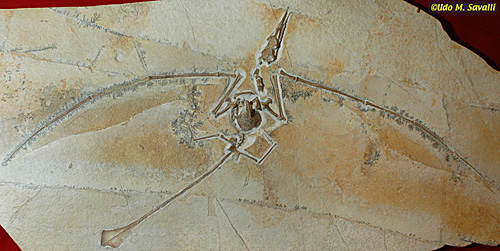
Rhamphorhynchus fossil, late Jurassic Period, Solnhofen Limestone, Germany (MAL)
|

View Larger Image
|
Pterodactyloidea
- The more derived clade of pterosaurs
- Generally larger sized than Rhamphorhynchoids (but size variable)
- Tail always short
- Some were toothless
| 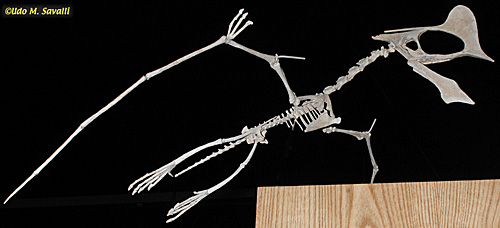
Tapejara skeleton, Early Cretaceous, Brazil (WDC)
|
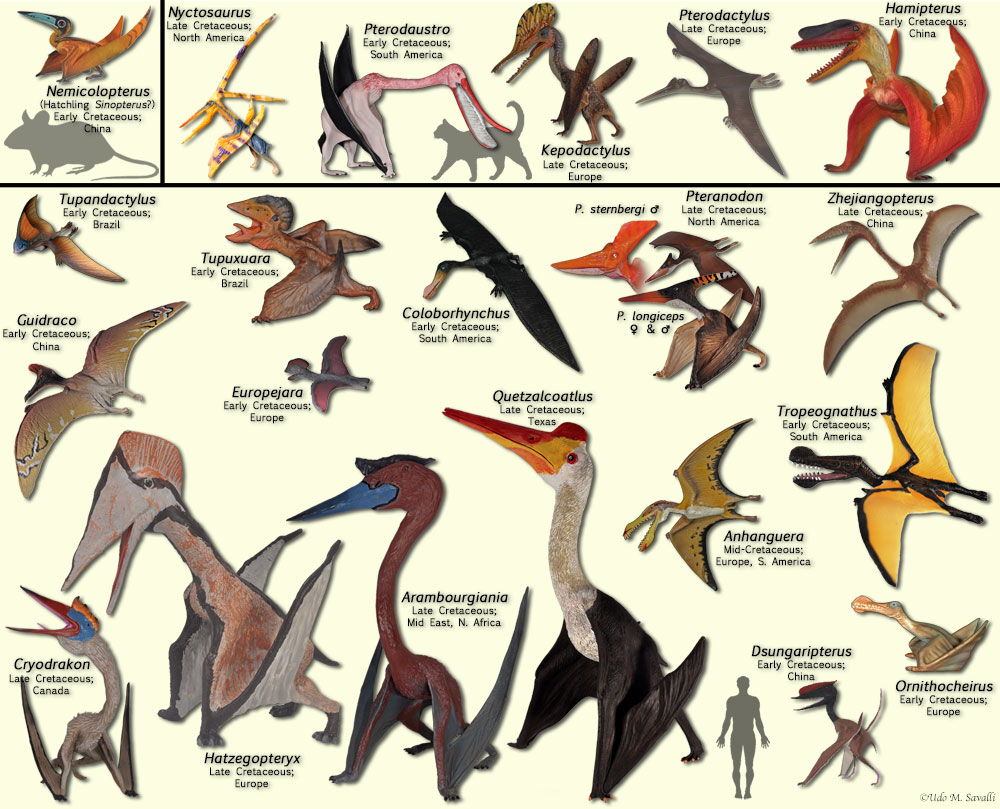
View Larger Image
Distinguishing Sexes and Species: Pteranodon
See lab manual Exercise 12 for more information
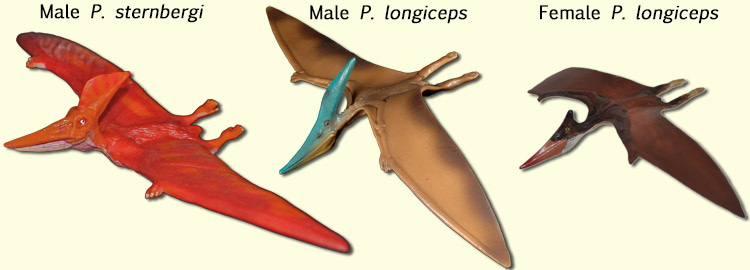
View Larger Image
|
|
|
Pterosaur Fossils
Replica of a Rhamphorhynchus muensteri fossil
Family Rhamphorhynchidae
Late Jurassic Period, 151-148 Ma; Europe
| 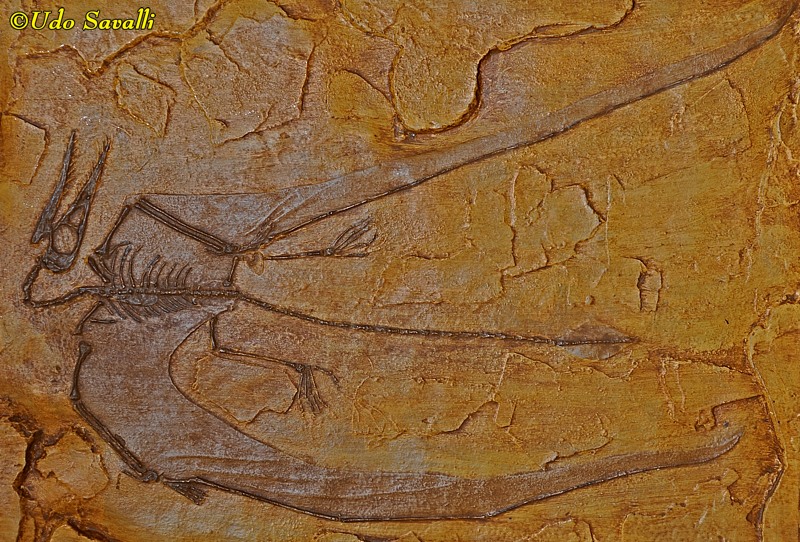
|
Possible life appearance of Rhamphorhynchus:

|
|
Replica of a Pterodactylus kochi fossil
Family Pterodactylidae
Late Jurassic Period, 145 Ma; Europe)
| 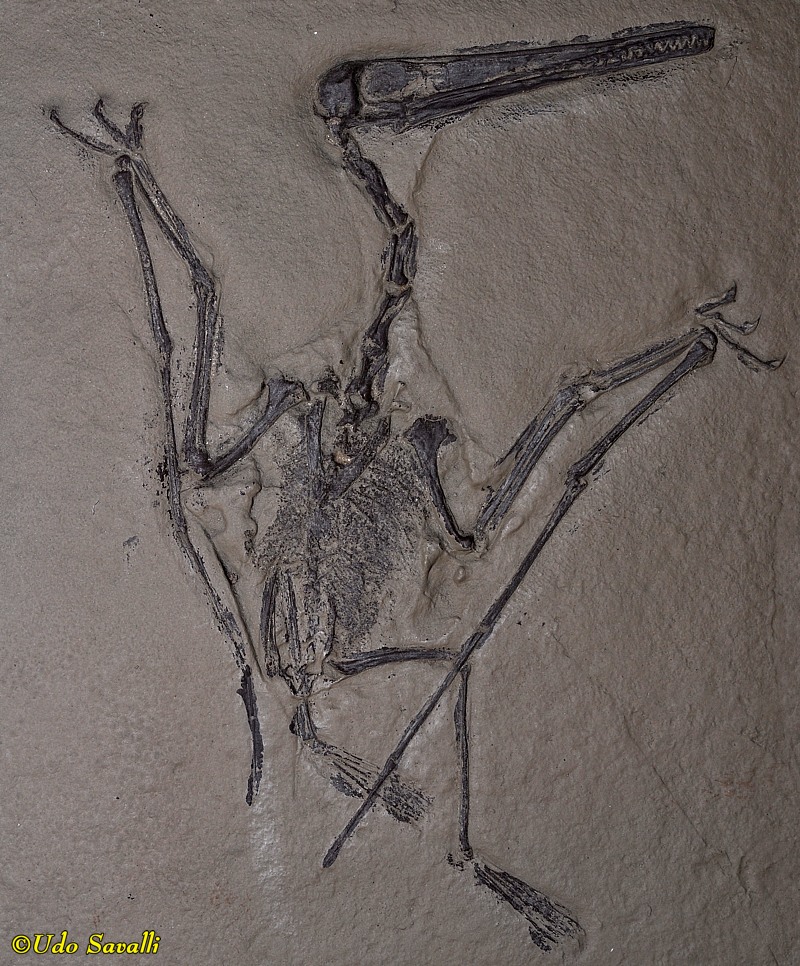
|
Possible life appearance of Pterodactylus:
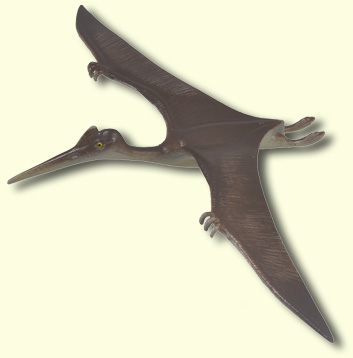
|
|
Footnotes
- Abbreviations for museums where photos were taken
AZMNH = Arizona Museum of Natural History, Mesa
BHI = Black Hills Institute of Geological Research, SD
DRC = Dinosaur Resource Center, Woodland Park, CO
FMNH = Fernbank Museum of Natural History, GA
MAL = Museum of Ancient Life, Lehi, UT
NMMNH = New Mexico Museum of Natural History
PFNP = Petrified Forest National Park, AZ
SGDDS = St. George Dinosaur Discovery Site, UT
WDC = Wyoming Dinosaur Center, Thermopolis
|